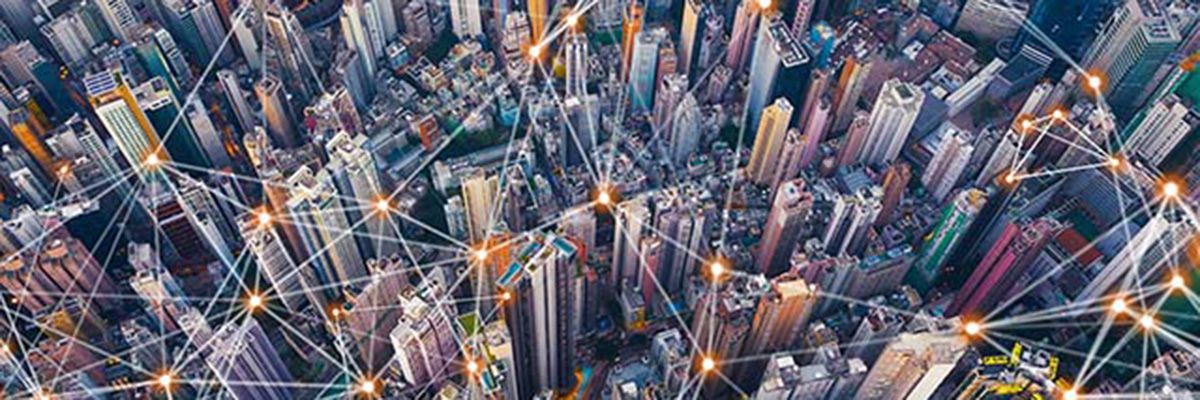
Smart Buildings, Building Management systems (BMS) and Energy Management Systems (EMS)
In a previous blog we discussed how Freedom – NexRev’s building and energy management system – uses IoT to provide a centralized view of connected devices, sensors, meters, as well as NexRev DrivePak deployments.
Today we are going to discuss Building Management systems (BMS) and an Energy Management Systems (EMS) and a perceived difference between the two – and explain the journey to Smart Buildings.
The Green Consultancy, an independent specialist in energy, carbon and environmental management writes that the terms BMS and EMS can be interchanged and essentially mean the same thing – and it’s true that there are many overlaps between the two systems.
However, at NexRev we see a slight distinction between BMS and EMS.
For us, EMS is a term used to describe a system that monitors and manages devices in a facility that are primary users of electricity (such as HVAC and lighting) in an effort to control the energy consumption from said devices. While a BMS will almost always manage those same devices, it may also include monitoring and management of other devices in the facility not geared towards energy, such as monitoring the fill status of a trash compactor or interfacing to an exterior pricing sign system such as those found at gas stations.
That said, in the future it is likely that the terms BMS and EMS will both become obsolete. Currently, many BMS/EMS do not regularly provide promised returns and under-perform without proper management. We agree with The Green Consultancy whose experts write that:
“the majority of BMS significantly under-perform. Even organisations that employ full time BMS engineers, or have BMS maintenance contracts, frequently have seriously dysfunctional systems. This results in the massive wastage of energy, increased costs and uncomfortable environments for building users. For example, a recent TGC audit identified that poor BMS control of a single air handling unit was wasting £30,000 per year”.
With the advent of IoT and advances in technology we expect to see a continued shift away from traditional EMS and towards smart buildings.
Cisco describes a smart building as one that “
Cisco describes a smart building “converges various building-wide systems such as HVAC, lighting, alarms, and security—into a single IT managed network infrastructure”.
The benefits of smart buildings, according to Cisco are:
Lower operational costs
A smart building can, for example, leverage data it collects to reduce use of electric lighting by adjusting shades to let in more natural light. Such lighting management has been proved to lower power usage dramatically. In turn, it can help buildings become more energy-efficient to meet or exceed stringent regulations for greenhouse-gas emissions.
Smart-building data can also support automated scheduling, from parking-space allocation to workspace assignment to conference room reservation.
Lower energy costs
Connecting lighting, shades, and HVAC systems, for instance, enable building operators to automatically adjust temperature, shades, and lighting based on time of day and occupancy.
Greater flexibility
Smart-building data can be used, for example, to detect changes in occupancy density. The building’s HVAC systems then adjust airflow, humidity, and temperature appropriately.
Or based on escalating density thresholds, lighting color could change to indicate too many people in a conference room, workspace, or building.
Smart Buildings, IoT, and NexRev
NexRev is already helping hundreds of companies move towards smart buildings thanks to our early adoption of IoT solutions enabling enterprises to increase their operating efficiencies while reducing energy consumption
NexRev’s solutions act as the IoT hub and have a number of roles. They:
- Aggregate data from across the deployed footprint of building management peripherals – which can number many thousands of devices
- Provide a centralized view of said peripherals being used by an organization across single or multiple buildings
- Assess conditions to actively manage building performance, both from a comfort and cost standpoint.
The use of IoT is key to the effectiveness of NexRev’s solutions, just as it is increasingly so for many other kinds of remote data collection and for different sectors. In fact, we’ve been doing this for years – and are continually investing in further enhancements.
Our IoT Future
As we expand our capabilities into managing the energy consumption of facilities, including lighting, HVAC and other devices that use electricity, our use of IoT sensors to gather meaningful and relevant data will continue.
Getting started towards lower energy consumption, a lower bill – and an energy-waste-conscious organization
To start the conversation about how you can reduce energy consumption and costs, start the process of creating smart buildings, and do your bit to slow down energy waste, please send a message to:
If you’d like to read our white paper Facts Every Energy Manager Needs to Know or the case study about how NexRev DrivePak has helped one of our customers to achieve 26% Energy Reduction with 47% ROI, then please also send an email to